Object of the month: Blunderbuss
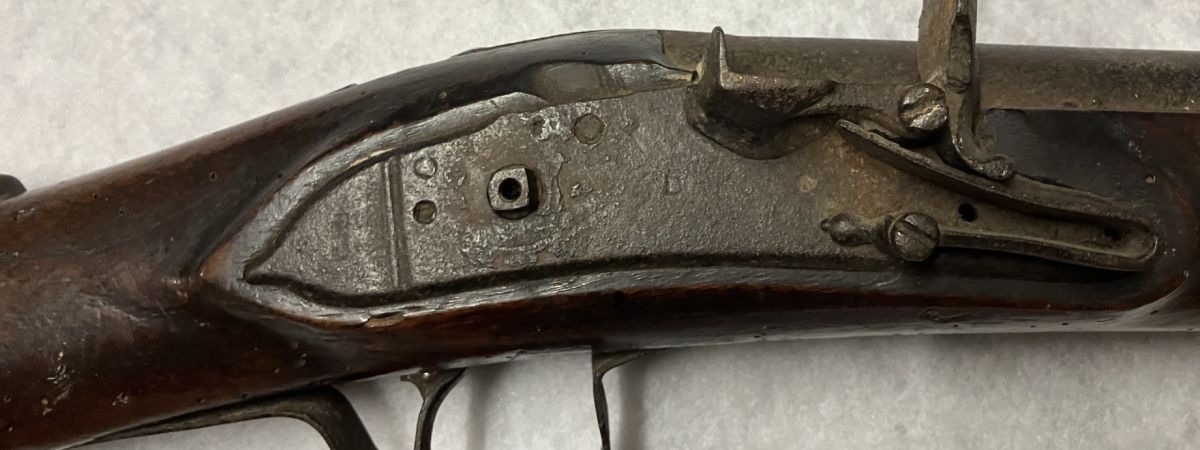
Share
Each month we like to highlight one of the objects in the Laurence Cadbury Collection, at Selly Manor. This month, a student who is on placement with us from Baskerville School, has chosen the Blunderbuss.
The Blunderbuss is one of the most well-known firearms in history due to its portrayals in popular media.
History of the Blunderbuss
The Blunderbuss was created in the 1600s In Germany / Holland where it was called the Donderbuss, which roughly translates to Thunder Gun. It was originally used by the Dutch; however, it soon became popular all across Europe and Later around the 1700s in the American Colonies. Its popularity was because of its effectiveness in close quarters and favourability among sailors because it was perfect for boarding raids on ships and was a lot more mobile than traditional heavy weapons at the time.
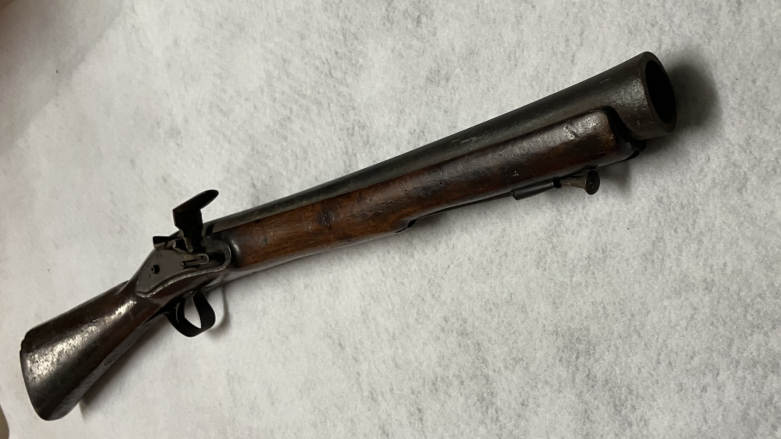
Description of Selly Manors Blunderbuss
The blunderbuss (313) is a shorter model designed to be fired from the arm rather than on a swivel, it is made of Wood and Iron with the Hammer and flint being removed for safety reasons.
This example is in moderate condition however, it has severe woodworm damage on the stock and a bit more on other parts of the wood and the firing mechanism and barrel show signs of oxidizing.
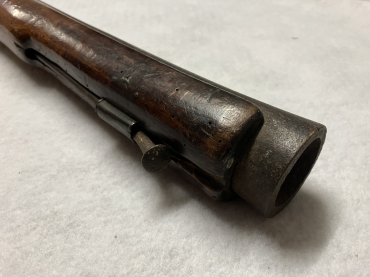
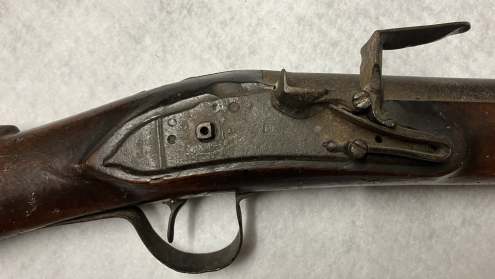
Why is this object interesting?
This object is interesting because it shows one of the ways people chose to defend themselves in that time period and fight in wars that could have a massive impact on history with each battle.
Another reason it is interesting is that it was a key part in the developing history of firearms, in this instance the blunderbuss is the grandfather of what we now know as the shotgun, both being effective at short range and firing multiple pellets rather than just one round.
How it got to Selly Manor
This Blunderbuss (313) was acquired by Lawrence Cadbury in 1911 as a part of his collecting spree around the U.K.
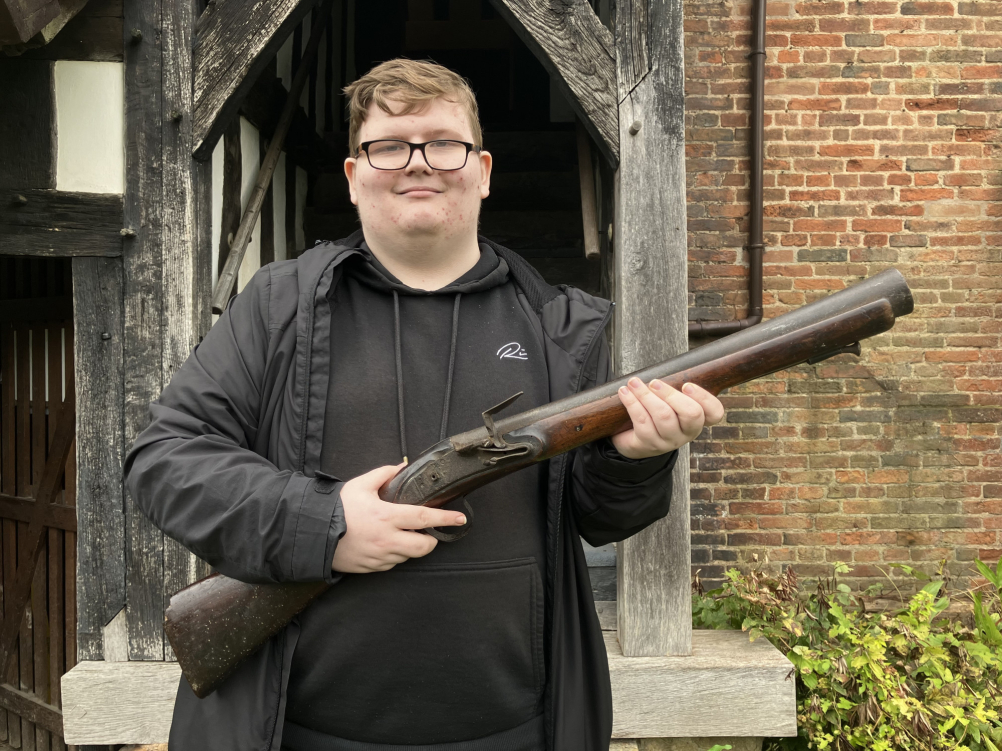
How it works
This Blunderbuss uses a flintlock mechanism to fire. You can fire it by putting a sharp flint into the hammer, prime the hammer back half way, opening the frizzen which exposes the pan. Then pour the gunpowder into the pan and close the frizzen. Pour some powder into the barrel, load the ammunition into the barrel by using the ram rod located at the end of the gun where it should create a seal, prime the hammer back all the way and when you are ready to fire, pull the trigger.
This mechanism was notoriously unreliable however, because of how precise you had to be when loading in the powder and how hard the gun was to maintain - on many occasions the gun would misfire and if the barrel was not tempered properly it could explode (a piece of leather would be placed In the hammer to lock the flint securely in place).
The student placement is a partnership between Selly Manor Museum and Baskerville School. The placement enables the museum to build stronger links in the community as well as supporting individuals learning.